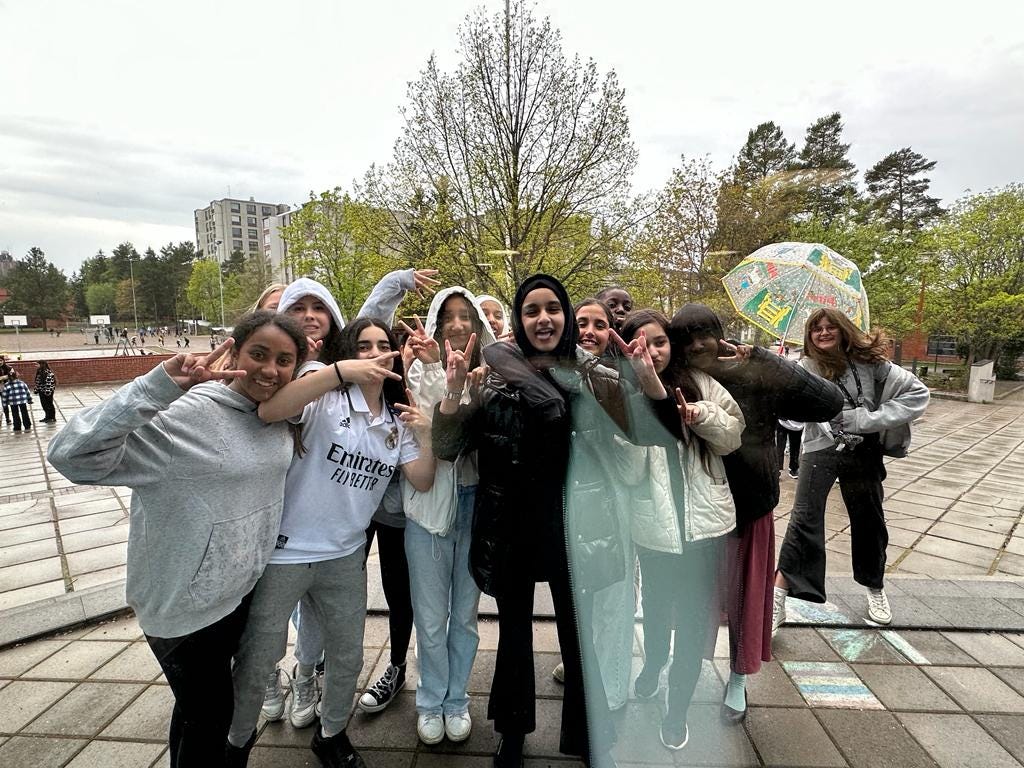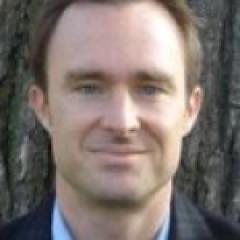Sam Chaltain: In Finland, the Future of Learning Has Arrived -- Just Not Where You Think
I spent last week in Finland, the small Scandinavian country that, for educators, has become a Mecca of sorts. And while I was there, a surprising thing happened:
I came for the schools.
I stayed for the library.
It’s hard not to be aware of the schools, which have experienced a dramatic metamorphosis over the past half-century.
For much of the early 20th century, Finland was agrarian and underdeveloped, with a GDP per capita trailing other Nordic countries by 30 to 40 percent in 1900. But in 1917, Finland declared its independence from Russia, and insisted that women be heavily represented in its first parliament.
As a result, the new nation prioritized a whole slate of policies that have helped support the development over time of a society that values and protects children. Free preschool programs enroll 98 percent of children in the country. Compulsory education begins at the age of seven, and after nine years of comprehensive schooling, during which there is no tracking by ability, students choose whether to enroll in an academic or a vocational high school. The graduation rate is nearly 95 percent.
Finland’s deep investments in the welfare of all people impact every aspect of public life. "It seems to me that people in Finland are more secure and less anxious than Americans because there is a threshold below which they won't fall," said Linda Cook, a political scientist at Brown University who has studied European welfare states. "Even if they face unemployment or illness, Finns will have some payments from the state, public health care and education."
On our tour of schools in Helsinki and Turku (the current and former capitals), we saw evidence of both the “Finnish Miracle,” and features far less miraculous.
In every location, the atmosphere in the rooms and hallways were marked by an orderly, active hum, the kind that emerges only when everyone knows one’s role, responsibility and contribution. Classes are just four or five hours a day, and as many as one-third of the courses Finnish students take are non-academic.
Lest a visitor decide that any one of these solutions would solve their country’s own problems, our host for the week -- Ari Koski of Turku University -- warned us that “a Finnish system doesn’t work in any school outside Finland. Everything influences everything else -- and if you take one piece out, it doesn’t work anymore.”
Of those influences, Koski believes Finland’s teacher preparation program is the most important. Only eight universities are permitted to prepare teachers, and admission to these programs is highly competitive: less than one of every ten applicants is accepted.
You can imagine my surprise, then, when almost every classroom lesson I observed was . . . OK. As one of my traveling colleagues said, “I feel like I’ve seen this movie before.” And that’s because we have seen it before -- teacher-driven, content-heavy, “sit and get” instruction.
Where’s the miracle in that?
Then I remembered that the goal of the Finnish system is equity -- as in, choose any school, anywhere, and it will be of a certain quality -- and that they have actually achieved it.
In other words, Finland’s goal is not to spark the creation of spectacular schools -- it’s to ensure an entire country of good ones.
Its miracle, therefore, flows from its integration, not its innovation.
Whereas its schools may not be hotbeds of innovative teaching, the newest public library in its capital city may be the most spectacular model for the future of learning that I have ever seen.
It’s known simply as Oodi. It opened in 2018 -- a gift to the Finnish people to honor a century of independence. And it is a beautiful, vibrant, multigenerational civic hub for creativity and connection.
“Oodi is what you want it to be,” explains its website. “Meet friends, search for information, immerse yourself in a book or work. Create something new in a studio or an Urban Workshop -- seven days a week, from early in the morning till late in the evening.
“Oodi is a meeting place, a house of reading and a diverse urban experience. Oodi provides its visitors with knowledge, new skills and stories, and is an easy place to access for learning, relaxation and work.”
It is, in other words, the ideal “school” of the future -- a living meeting place of discovery that is open to all.
To be sure, the architecture is part of the story: a striking mixture of glass and steel, with a wooden facade and three distinctive levels: an active ground floor, a peaceful upper floor, and an enclosed in-between space of myriad functions.
But whereas Finland’s schools are still characterized by a culture of teaching, Oodi stands as a beacon of learning -- self-organizing, emergent, and overflowing with the life force of its inhabitants.
How, then, do we heed the wisdom of this example?
And what would an “Oodification of education” actually look like - and require?”
Well, for starters, it would require more places designed for movement, gathering, and multiplicity.
It would require paying closer attention to aesthetic beauty, which attracts us to shared space like moths to a flame.
It would require focusing less on pre-conceived “lessons,” and more on carefully-constructed conditions that can spark curiosity, creativity and awe.
And it would necessitate our acknowledgment that welfare (“the state or condition of doing or being well; the health, happiness, and fortunes of a person or group”) is not only not a dirty word; it is, in the end, the only viable way forward for every nation on earth.
“We -- all of us -- we don’t even understand what is coming,” said Mirjan Rasmus, principal of the Turku International School. “The world that we knew -- the world we grew up in -- doesn’t exist any more. So we have to be flexible in everything that we do, and we have to navigate this Brave New World together.
“Which current subjects are actually important for the future? How do we deal with change? The smaller details are just not that important anymore.”
This blog post has been shared by permission from the author.
Readers wishing to comment on the content are encouraged to do so via the link to the original post.
Find the original post here:
The views expressed by the blogger are not necessarily those of NEPC.


